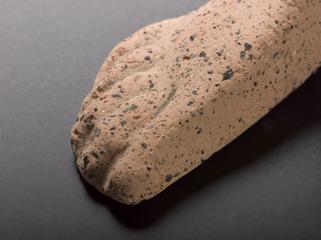


















Metal and wood fumigating torch (copy), carried around for protection against bubonic plague, 17th century
In the 1600s, fumigating torches were believed to protect the carrier from bubonic plague. Sweet smelling herbs burnt in the top of torch were believed to provide protection against disease. At the time, it was thought that disease was spread through foul smelling things – the buboes caused by the disease and the breath of the dying both smelt disgusting. Plague seemed to be passed quickly from person to person but it was only in the 1890s that plague was discovered to be spread by the fleas carried on rats.
Details
- Category:
- Classical & Medieval Medicine
- Collection:
- Sir Henry Wellcome's Museum Collection
- Object Number:
- A115561
- Materials:
- brass, bamboo, solder, copper (metal) and complete
- Measurements:
-
overall: 630 mm 85 mm, .39 kg
lid: 54 mm 58 mm,
- type:
- fumigator




